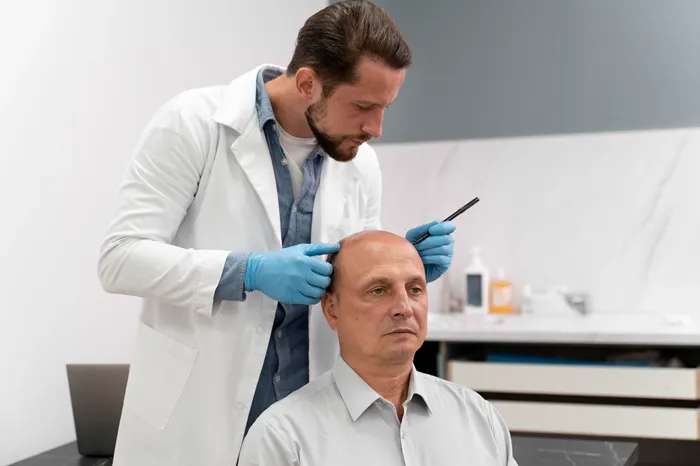When it comes to hair transplantation, understanding the concept of hair grafts is fundamental. One of the most frequently asked questions by patients is: how many hairs are in one graft? The answer to this question isn’t uniform, as it varies based on several factors. This article delves into the nature of hair grafts, the typical number of hairs they contain, and how this knowledge impacts hair transplant procedures.
Anatomy of a Hair Graft
A hair graft is a collection of hair follicles that are transplanted as a single unit during a hair transplant. Each follicle is an independent structure that consists of a hair shaft, root, and a surrounding sheath. The follicles within a graft are typically grouped based on their natural arrangement on the scalp. The donor area, usually the back and sides of the head, provides the source of these grafts due to the genetic resistance of follicles in this area to the hormones that cause hair loss.
Factors Affecting the Number of Hairs in a Graft
Natural Hair Characteristics
The natural characteristics of a patient’s hair play a significant role in determining the number of hairs in a graft. Patients with naturally thick hair are more likely to have grafts with a higher number of hairs. Conversely, those with thin hair may have grafts with fewer hairs. For example, individuals of Asian descent often have thick, straight hair, which may result in a higher proportion of three – and four – hair grafts. In contrast, individuals of Caucasian descent may have a greater variety of hair thicknesses, leading to a more even distribution of single – to four – hair grafts.
Donor Area
The location within the donor area also affects the number of hairs in a graft. The lower part of the donor area, closer to the neck, often contains follicles that are more likely to be grouped into multi – hair grafts. These follicles tend to be larger and more robust. The upper part of the donor area may yield more single – and two – hair grafts.
How Many Hairs Are in One Graft?
On average, one graft contains approximately 2.2 hairs, but the exact number can vary based on individual characteristics. Here’s a closer look at the different types of grafts and their uses:
Single-Hair Grafts
Number of Hairs: 1 hair
Usage: Typically used along the hairline to create a soft, natural transition. These grafts help define the hairline without looking harsh or artificial.
Double-Hair Grafts
Number of Hairs: 2 hairs
Usage: Commonly placed in the frontal and mid-scalp areas to provide balanced density while maintaining a natural appearance.
Triple and Quadruple-Hair Grafts
Number of Hairs: 3 to 4 hairs
Usage: Ideal for the crown and back of the scalp, where more coverage is needed to create the appearance of thicker hair. These grafts are also used to maximize density in areas with more significant hair loss.
Significance in Hair Transplant Procedures
Understanding the number of hairs in a graft is crucial for hair transplant surgeons. By carefully selecting and placing grafts based on the number of hairs they contain, surgeons can create a natural – looking hairline and achieve the desired density throughout the scalp. For patients, knowing about the number of hairs in a graft helps in setting realistic expectations about the outcome of the hair transplant. It also gives them an understanding of how the surgeon plans to achieve the desired results.
Conclusion
The number of hairs in one graft can range from one to four, depending on various factors such as natural hair characteristics and the location within the donor area. This knowledge is essential for both hair transplant surgeons and patients. Surgeons use this information to plan and execute successful hair transplant procedures, while patients can use it to better understand the process and set realistic expectations. As the field of hair transplantation continues to evolve, a deeper understanding of hair grafts will undoubtedly contribute to even more successful outcomes.
Related topics:
- Can Hair Transplant Surgery Lead to Permanent Side Effects?
- What Is Per Graft in Hair Transplant?
- What Happens After Hair Transplant?


